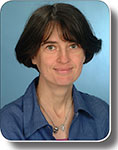Sedimentary fill of submarine canyons and channels using a Cellular Automata process-based model
Tristan Salles A , Marie-Christine Cacas B , Thierry Mulder C , Fangjun Li A , Cedric Griffiths A and Chris Dyt AA CSIRO Petroleum
B IFP
C Universite Bordeaux
The APPEA Journal 48(1) 191-208 https://doi.org/10.1071/AJ07012
Published: 2008
Abstract
Understanding the deposition processes in submarine canyons and channels has significant implications for petroleum exploration. A numerical model has been established to simulate the sedimentary fill of canyons and channel-levee complexes present in turbiditic environments. The model is based on a Cellular Automata (CA) approach. Depositional processes which control the evolution of the system are described by the rules established either empirically from observations or from simplified physical laws. Sedimentary systems are described by a meshed domain and are built with a series of unitary events. Two versions have been developed and couple the impact of flow effects on the nature and architecture of deposits.
The first model allows a dynamic description of seabed evolution under the activity of gravity flows. For a single event simulation, both the morphology of the seabed and sediment distribution is estimated at each time step. The model was calibrated by the application to the turbulent surge that occurred during the 1999 storm in Capbreton canyon (France) using core control.
The second model simulates deposit architecture accumulated by a succession of steady state flows. A possible way to average physical processes over time is to then consider geological events such as successive quasi-steady state flows for which sediment transport has permanent values. The CA paradigm is an efficient approach to quickly obtain such stationary states. Results obtained for the first sequence of the Pab channel complex (Indo-Pakistani margin) provides the first step towards the quantitative understanding of external parameters on catastrophic gravity flow dynamics and on the organisation of subsequent deposits.

Tristan Salles is working as a post-doctoral fellow at CSIRO in the Predictive Geoscience team using Sedsim (stratigraphic forward modelling). Tristan’s principle interests are in numerical programming of submarine gravity flows (turbidity current, debris-flows), transport-erosional-depositional processes and post-depositional sediment evolution (compaction, diagenesis). He obtained his undergraduate degrees in 2003 both from Centrale Engineering School (France) and Marseille University (France) in the field of marine sciences and physical oceanography. He joined IFP in 2003 where he undertook a PhD (finished in 2006) in collaboration with Bordeaux University on the construction of a numerical model to simulate the sedimentary fill of canyons and channel-levee complexes present in turbiditic. Tristan.Salles-Taing@csiro.au |

Marie-Christine Cacas obtained her graduate degree in hydrology in 1985 from ENSHMG Engineering School (France). Then, she joined the ENSMP (France) where she achieved a PhD in 1989 in the field of hydrogeology. Since 1990, she has worked at IFP where she has been involved in different activities of numerical modelling, especially in geosciences. From 1992 to 2001, Marie-Christine worked on the modelling of fractured reservoirs. From 2001 to 2005, she was in charge of the stratigraphic modelling division at IFP. Now, she is an IFP associate professor from 2003 and has been in charge of the R&D project on basin modelling in IFP, since 2006. m-christine.cacas@ifp.fr |

Tristan Salles is working as a post-doctoral fellow at CSIRO in the Predictive Geoscience team using Sedsim (stratigraphic forward modelling). Tristan’s principle interests are in numerical programming of submarine gravity flows (turbidity current, debris-flows…), transport-erosional-depositional processes and post-depositional sediment evolution (compaction, diagenesis…). Tristan obtained his undergraduate degrees in 2003 both from Centrale Engineering School (France) and Marseille University (France) in the field of marine sciences and physical oceanography. He joined IFP in 2003 where he made a PhD (finished in 2006) in collaboration with Bordeaux University. He was working on the construction of a numerical model to simulate the sedimentary fill of canyons and channel-levee complexes present in turbiditic. Tristan.Salles-Taing@csiro.au |

Fangjun Li is a research scientist at CSIRO Petroleum. She obtained her BEng and MEng degrees in coastal engineering in 1988 from Dalian University of Technology, China. She worked for 9 years as a research assistant and research fellow at State Key Laboratory of Coastal and Offshore Engineering, China. In 1997, she came to Australia and studied at the Centre for Offshore Foundation Systems, The University of Western Australia. She was awarded her PhD (Civil Engineering) in 2001. She joined CSIRO Petroleum and worked primarily on the code development for Sedsim and Australian seabed model. She has published studies on modelling of local scour around offshore pipelines, 3D flexural isostasy, and coastal morpho-dynamic models. Li.Fangjun@csiro.au |

Cedric Griffiths received an honours degree in Geology from Durham University in1972, and a PhD from the University of Newcastle-upon-Tyne in 1983. Cedric has worked with deBeers, Exlog, Zambian Geological Survey, Sintef Petroleum, BP, Stratigraphic Research International (co-founder) and CSIRO. He has held positions as Nordic Council Research Professor in petrophysics at NTH and the South Australian State Chair in Petroleum Geology. He was Acting Director of the NCPGG from 1996 to 1998. He has held council positions in the International Committee on Quantitative Stratigraphy, and the International Association of Mathematical Geologists. He co-edited Geological Application of Wireline Logs II and is a co-author of Sequence Stratigraphy. He is a Chartered Fellow of the Geological Society of London, and Theme Leader in CSIRO Petroleum Resources. cedric.griffiths@csiro.au |

Chris Dyt is an applied mathematician working with the Forward Stratigraphic Modelling (SFM) program Sedsim. Chris’ principle interests are in hydrodynamics and numerical programming. Chris has been working with the Sedsim program on and off since 1996 and has been instrumental in its conversion from a research code to a commercial software application, first working at the NCPGG at Adelaide University before joining CSIRO in 2000. He obtained his doctorate and undergraduate degrees at Monash University, where he was working on numerically modelling the convective motions of the evolving solar atmosphere. He then worked for nine months in the mathematics department at LaTrobe University on numerical solvers for Ordinary Differential Equations. Member: PESA, SIAM, IAMG. Chris.Dyt@csiro.au |


